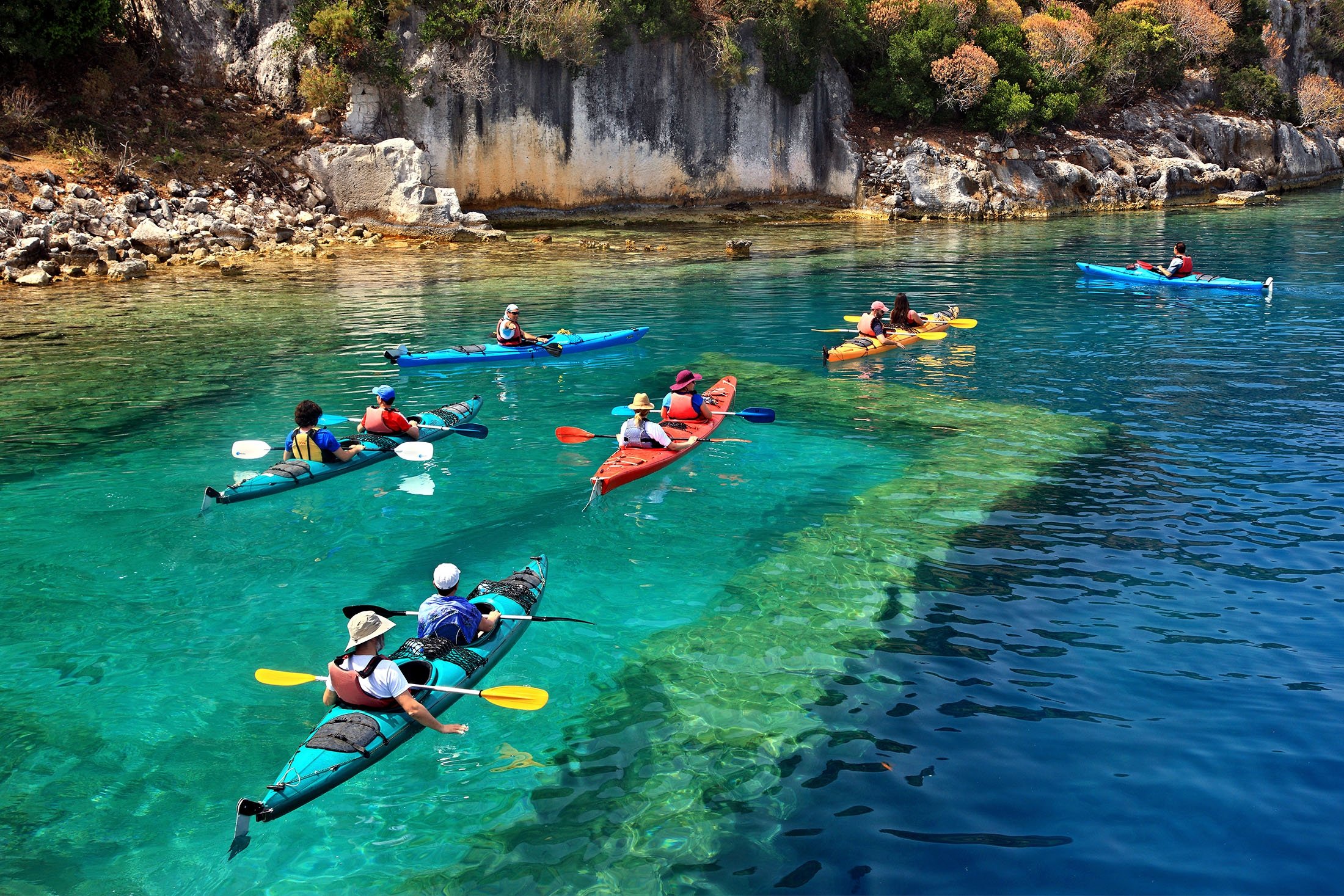Health Benefits of Kayaking…………………….
Kayaking is a popular outdoor activity. It also helps your heart, joints and upper body strength tremendously.
Whether you’re paddling for fun or racing, kayaking has a lot to offer your health and well-being. This adrenaline-pumping yet relaxing water sport is described in detail below.
Kayaking: What is it?
At first glance, kayaking may seem like a blur from paddling. However, kayaking is distinctive due to a few key differences.
Riders are strapped into individual seats in a kayak, which is a smaller and more compact craft than a canoe. Due to its smaller size, the double-sided paddle is the most efficient way to steer the kayak. With this paddle, you will paddle in both hands while kayaking, dipping it into the water on each side to propel yourself forward.
There are many kayaks that can only be used by one person, but there are also tandem kayaks that can accommodate two and sometimes three. The person sitting in front controls the rhythm of the paddling, while the person sitting in the back follows the stroke pattern when paddling with a partner.
Equipment Needed for Kayaking
Before embarking on a water excursion, it is essential to have the right equipment. Make sure you have the following items to have the best kayaking experience:
A kayak that can fit the right number of people, an ambidextrous paddle for each, a life jacket or other flotation device, spray skirts (optional to keep the lower body dry) and a water bottle. Kayaking is an excellent exercise because it combines cardiovascular exercise with low-impact strength training.
You can expect the following health benefits from being near the water:
Improved Cardiovascular Health
Looking for a fun way to complete 150 minutes of moderate-intensity aerobics per week? Kayaking can be your new destination.
“Cardiovascular exercise is something that gets your heart rate and breathing rate up for at least 10 minutes.” According to Laura Flynn Endres, a Los Angeles-based personal trainer, “kayaking fits in nicely because it’s a rhythmic exercise where you keep a fairly steady pace.”
The pace and intensity of your kayaking while navigating your chosen body of water is entirely up to you. Your heart rate will increase as you paddle harder, but lighter activity in intervals also has benefits.
Keeping a steady pace or even switching between slower and faster intervals gets the heart pumping, Endres says, making it a great low-impact exercise option for burning fat and improving heart health.
Upper Body Strengthening
It is obvious that kayaking uses the upper body the most. Your arms, shoulders, back and chest muscles will be strengthened by the combination of the lifting and dipping motion of the paddle and the resistance of the water. Increased leg, glute and core strength. Despite kayaking’s apparent focus on the upper body, the lower body still gets a workout. This is not surprising, as a study of Olympic kayakers found that their stature tended to have a larger upper body circumference.
Endres claims:
“Yes, the muscles of the back, shoulders, arms and abdomen are the main driving forces. However, proper and efficient form of paddling also requires the use of the muscles of the legs and glutes.” Maintaining proper form, maintaining an even pace, and using effective and efficient paddling strokes are all made easier by building muscle strength and endurance in these areas of the body.
The back-and-forth motion of a sit-up paddle engages your core, as well as your leg muscles and glutes, resulting in a stronger, leaner stomach. Your diagonal muscles—the muscles responsible for turning your core—are especially pulled in during the left and right rowing motions.
Low-intensity, joint-friendly movement
High-impact exercise isn’t for everyone. In fact, low-impact exercises are much better at certain stages of life or for individuals with special medical conditions.
Kayaking, unlike running, tennis and many team sports, doesn’t require you to pound the ground with your feet. Because it’s gentle on the joints and low impact, this exercise is good for people who have arthritis or are at risk of injury.
Another advantage of low-impact activities is that they require less recovery time after training. In addition, a 2015 study published in the journal Sports Medicine Open found that low-impact exercise improved cognitive health in older adults.
Time spent outdoors
In this modern and fast-paced world, who wouldn’t benefit from more fresh air? Research shows that as little as 20 minutes in nature can help reduce the signs of stress. Going out on a kayak, lake, or stream can actually be a necessary antidote to the stressors of everyday existence.
You can also rekindle your sense of adventure and curiosity when you head out with a paddle in hand. Who knows where your kayak will take you or what you’ll see? In addition, alone time can be a powerful tool for refocusing and reconnecting with your inner self through head-clearing silence.
How to Prepare for Kayaking
Unless you live right on a lake, you may not get to kayak every day. However, you can still prepare for days on the water by working out at home or at the gym.
Endres suggests several exercises that can be done out of the water to get into or stay in shape for kayaking. Try incorporating planks, deadlifts, hollow body holds and bicycle moves for your obliques, as a strong core is your foundation and driving force.
He also suggests rowing with dumbbells, a barbell, bands or cables to work your upper and lower back. Biceps curls, triceps extensions, and triceps bench dips are three exercises that can help strengthen the biceps and triceps. Don’t forget to also work your legs with squats, deadlifts, deadlifts and squats and glutes with bridges, clamshells and hip thrusts!
You may want to consider virtual kayaking if you want to improve your skills even further. One small study found that individuals who engaged with a computer-generated kayak testing system increased their happiness and learning progress through the game.











